The most ingenious representative of home appliances is the washing machine. It greatly facilitates the life of a modern person and allows you to solve the problem of washing clothes. It has no equal in usefulness, since this technique does the hardest work. But what is the history of the washing machine? How did it come into being and what were the first models?
The history of the creation of washing machines is interesting because for more than 160 years, the principle of their work has not changed - here the laundry is washed either in a rotating drum, or rinsed in a stationary tank under the action of a rotating force. Let's look at the history of washing machines in more detail, starting in 1797.
First washing machine
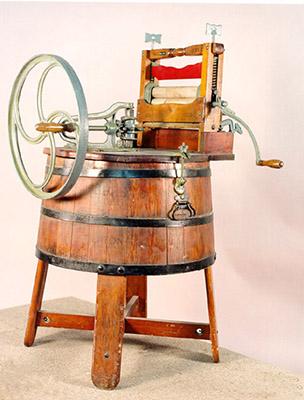
What happened back in 1797? Then the first washboard was invented. With its help, the housewives could more effectively deal with pollution - its ribbed surface made it possible to remove even deep stains. The washboard has been used with success for decades, offering at least some relief from the tedious process of washing.
A little over 50 years later, the real history of the washing machine began. In 1851, the American James King applied for a patent for a washing machine. The device received a real drum, in which dirty laundry was laid and water was poured. There was no question of any electric drive then, so the unit worked on manual traction - the inventor equipped it with a special handle that set the drum in motion.
Everything that was invented later was not much different from the original prototype.By the way, in the same 1851, a rather unusual washing machine was born, driven by mules. He could wash a large amount of linen, and the unit itself became a means for making money - the inventor began to accept linen for washing for a fee, which was used as gold.
Serial production of washing machines
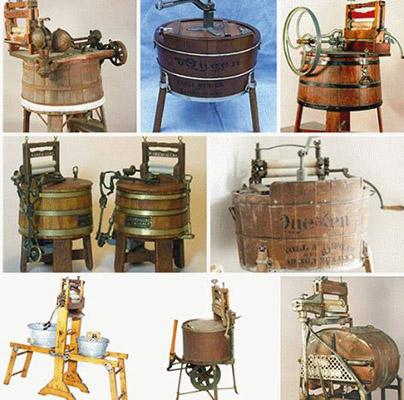
The history of the washing machine began to fill up at a frantic pace, and over the next 20 years, more than 2,000 patents were filed with patent offices. Some of these inventions have survived to this day, but most of the washing machines turned out to be so unsuccessful that no one dared to apply the inventions in everyday life.
William Blackstone pioneered mass production of washing machines. His ideas were very successful, and the first user to receive his newest manual washing machine from William's hands was his own wife. After that, the inventor decided to start mass production of his technique. The cost of one washing machine was $2.50.
The first washing machines with a motor
In 1908, an event took place that marked a new era in the production of laundry equipment - the world's first washing machine with an electric drive appeared. Its inventor was Alva Fisher, a resident of the United States.It was he who replaced the tedious manual drive with electric traction. As a result, washing has ceased to be such a tedious process.
In subsequent years, a real boom in the production of washing machines began in America. In just a decade, the number of manufacturers has grown to 1300 units. But almost none of them survived to our times. Only Whirlpool remained afloat, which revolutionized the design of washing machines.
The appearance of buildings
The thing is that the mechanisms of the first washing machines were completely open. Because of this, they could not be called safe, and users were often injured. Dangerous were even the spinning systems, which are two rollers between which wet laundry was scrolled. As far as Whirlpool is concerned, she was the first to think about the fact that laundry equipment should be safe. As a result, washing machines with plastic cases were born, behind which all the stuffing was hidden.
The Whirlpool brand is known to this day - its products are found in many stores selling household appliances. It was this company that managed to go through the entire history of the creation of washing machines. What happened next?
The path to automatic machines
In the 20s of the last century, washing machines acquired enameled tanks, and their heavy copper and short-lived wooden counterparts went down in history forever. But the developers did not stop there - 10 years later, washing machines began to be equipped with electric drain pumps, which made the work of housewives even easier.In the same years, the first mechanical timers appeared, on which it was possible to set the duration of the washing cycle - many stages became automated.
The first Soviet washing machine
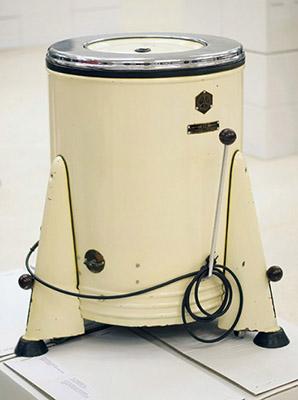
The history of the domestic old top-loading washing machine began in the 1950s. At this time, Riga-made activator washing machines EAYA-2 and EAYA-2 appeared in Soviet stores. Looking at a photo of one of these machines, one gets the feeling that this is not a piece of household appliances, but the first stage of a launch vehicle - this miracle of technology acquired this design.
Washing machine "Vyatka"
In 1966, the Vyatka activator washing machines appeared in the USSR, which are nothing more than a barrel with an engine. Over the 16 years that have passed since the launch of the production of EAYA-2 and EAYA-3 washing machines, progress has only reached the introduction of a timer. Looking ahead, we will say that automatic washing machines were already being produced in the world, which indicates the deplorable state of washing technology in the USSR.
Semiautomatic centrifuge
In subsequent years, almost nothing happened - the Soviet industry actively stamped "barrels with motors", pointing to the highest reliability of these machines, exposing this parameter as the most important advantage. A little later in the USSR, the first semi-automatic washing machinesequipped with centrifuges. A striking example of this is the washing machine "Siberia", which can wring out linen. Subsequently, numerous analogues appeared, which are produced to this day.
The first machines in the USSR
The beginning of the 70s was marked by the appearance of the first Soviet automatic washing machines (the lag behind the rest of the world was more than 20 years). The forerunner of modern automatic machines was the Evrika washing machine. True, it could not be called an automatic machine either - pouring water was carried out in manual mode. But the spin of the linen here was carried out in the same drum in which the hand wash was carried out.
In the early 80s, Vyatka-automatic washing machines began to be produced in the USSR. Their production was carried out under license from Merloni Eletrodomestici, originally from Italy. It was the first full-fledged Soviet machine gun equipped with several programs. Probably, "Vyatka-automatic" became the only non-deficient machine, since the time of its release fell on the times of stagnation, and its cost was very high - as much as 400 rubles.
Another Soviet model was the Volga-10 automatic machine, which was inferior in its characteristics to the Vyatka, which was why it was discontinued. The main disadvantage was high energy consumption, although in order to buy Vyatka, it was necessary to present a certificate in the store stating that the house had electrical wiring that could withstand such a load - the first washing machines were the most “gluttonous” equipment at that time.
The first washing machines
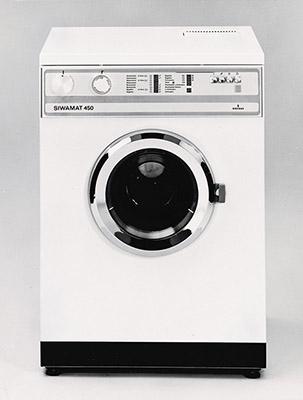
We have already talked about a belated breakthrough in the creation of Soviet automatic washing machines. But the first automatic machines appeared in the world much earlier, in 1947. They knew how to wash according to a given program, greatly facilitating the work of housewives. A few years later, automation began to fill all the nodes, including spinning. The real dawn of automatic washing machines has begun.
Every year they began to acquire more and more new features, and closer to the 70s, they began to resemble modern washing machines, especially in their shape. Over time, mechanical control modules also disappeared, completely giving way to smart electronics. By the way, the first processor washing machines appeared in 1978.
Modern washing machines
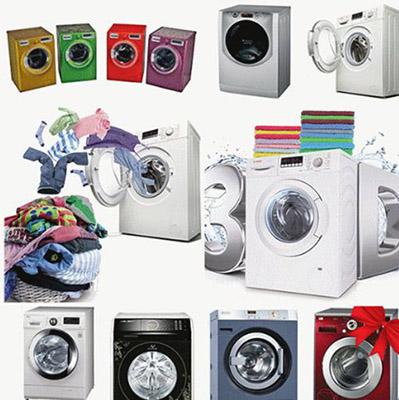
The history of the creation of washing machines is being written to this day. New items appear almost every month, while outdated models gradually go down in history. What features acquire new models?
- Energy consumption is reduced - manufacturers are actively working to ensure that washing machines are as economical as possible;
- The noise level is reduced - if the first cars were very noisy, today you can rock children next to some models;
- The quality of washing is improving - developers are working on technologies that can improve washing without increasing the amount of powder;
- Management is improving - there are machines that allow you to start washing by pressing one button.
Washing machines are becoming smart and economical. They know how to wash any type of laundry, how to analyze its weight and independently determine the required amount of washing powder, how to dry things. The smartest models can even auto-update firmware over the internet.. Among the machines with new technologies, one can note and washing machines with honeycomb drum, where the location of honeycombs is taken as the idea.
But this does not mean that simple washing machines are a thing of the past - on the contrary, people often buy simple baby machines (such as Fairy 2), helping out in the country, as well as semi-automatic machines with centrifuges that can work where there is no tap water. But automatic washing machines are still the market leaders.

Comments
About the first Soviet automatic washing machines it is somehow very indistinct, short and not entirely reliable.
A friend of mine (an electrician) has a book: <<ремонт и="" обслуживание="" автоматических="" стиральных="" машин="">>, year of publication: 1972. When I leafed through it, I was in no small surprise from the content. I had no idea that such equipment was already being produced in the USSR in the early 1970s. The book considered the device of washing machines like four different models, and even provided the content of the programs for them. About company <<мерлони>> I don’t remember something there, although I might just not have noticed.